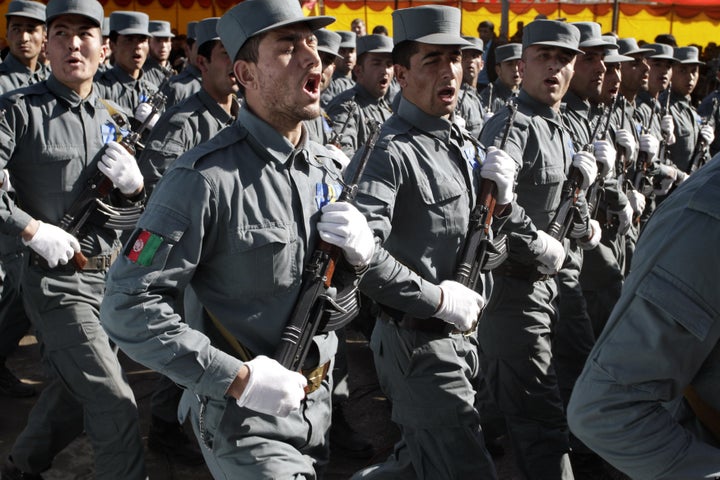
WASHINGTON -- The United States is at risk of wasting roughly $11.4 billion unless it comes up with a plan for constructing and maintaining nearly 900 Afghan National Security Forces facilities, according to a new report by a top federal watchdog. The news comes as U.S. President Barack Obama considers a military-backed proposal significantly boost the size of those forces.
The audit by the Special Inspector General for Afghanistan Reconstruction concluded that the money is "at risk" because of "inadequate planning" and the lack of a "long-range construction plan" for the facilities. SIGAR began its investigation when the NATO mission in Afghanistan was unable to provide documents "describing the size, location or use of Afghan National Security Force facilities, such as Afghan National Army garrisons."
Since 2002, the international community has funded both the construction and ongoing maintenance of these facilities. According to the SIGAR report, "the government of Afghanistan does not have the financial or technical capacity to sustain ANSF facilities once they are completed."
The U.S. government has likewise outsourced part of that job, awarding a total of $800 million to in facilities-maintenance contracts to the ITT Corporation. As McClatchy notes, ITT received the contracts even though the "firm admitted in 2007 to sending classified materials to foreign nations, including China."
SIGAR's report recommends developing a "long-range planning document" for the ANSF facilities that reflects a possible increase in personnel -- to a projected 400,000 in 2013.
On Tuesday, Senate Armed Services Chairman Carl Levin (D-Mich.), fresh off a trip to Afghanistan, told reporters that Obama is considering a proposal to expand the Afghan National Police and Afghan National Army by a combined 78,000 on top of their standing targets, which have been a combined 305,000 soldiers and police officers by October. Afghan security forces grew by approximately 70,000 in 2010.
"I urged the president strongly and with very direct words that this needed to be done to enhance the possibilities of success of our mission and to speed up the reduction of our forces so that that important part of our mission, which is the buildup of Afghan forces to take responsibility for their own security, can be improved and enhanced," said Levin, recounting a recent conversation he had with Obama.
As The Washington Post reported last week, the plan has "raised concern among diplomats in Kabul about the quality of recruits and the sustainability of an increasingly costly security apparatus financed almost entirely by international donors."
And the Afghan reconstruction watchdog has had its own problems. On Jan. 10, SIGAR Arnold Fields announced that he would be stepping down from his position amid congressional dissatisfaction with his office's spending oversight. Congress did not create SIGAR until 2008 -- nearly seven years after the U.S.-backed forces toppled the Taliban and roughly five years after Congress established a similar watchdog agency to monitor the reconstruction in Iraq, which began operations shortly after U.S.-led coalition forces invaded the latter country.
